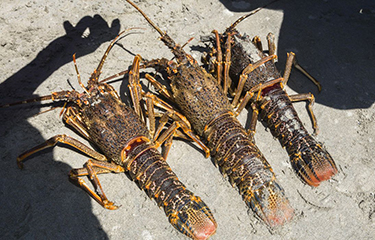South Africa Minister of Fisheries and the Environment Barbara Creecy has agreed to review the 2021/2022 total allowable catch for the country's West Coast rock lobster (WCRL) fishery after coming under pressure from small-scale fishers and other fishing communities.
Creecy has asked the newly appointed Consultative Advisory Forum (CAF) to carry out the TAC review, which comes shortly after the 15 October, 2021, announcement of a substantial reduction of the fishery’s TAC for the 2021/2022 fishing season to 600 metric tons (MT) – a reduction of 28.3 percent.
“The CAF will be requested to treat the review with urgency and to make recommendations to the minister within an agreed timeframe,” a department statement said.
Earlier, the government had defended the decision to reduce the TAC for the WCRL, saying in a statement on 21 October that reducing catch volumes is necessary if South Africa is to build back its WCRL resource from its current 2021 level by 2025. It said South Africa’s WCRL fishery “has been experiencing challenges of rapidly declining stocks in recent years.”
“Besides the sector being faced with increasing demand from fishing communities and the broader public for access to the resource, illegal fishing and the effects of climate change have also contributed to the vulnerability of the species,” the department said.
The department said it recognized that a reduction in quota would have an adverse impact on small-scale fishers, but that the measure is necessary to avert further decline of the WCRL population – which has dropped a further 1.5 percent off sustainable population levels.
“Rather than being at 90 percent of its 2006 level as estimated in 2019, the resource is now estimated to be at only 70 percent,” the department said.
Although the TAC for the species was based on an updated stock assessment for the WCRL resource, which indicated a further deterioration in the stock levels, Creecy said the CAF – a newly constituted panel of both domestic and international fishing companies and conservation scientists, industry representation through FishSA, and community representatives – should now “consider presentations and representations from stakeholders on the methodology used to determine the TAC.”
Creecy said she wants the CAF to review the appropriateness of the proportional cuts within the various sectors of the fishery and the data on the poaching estimates used in the TAC model before advising on whether the current cut is appropriate.
“I am acutely aware that a large number of people rely on the WCRL resource for their livelihoods, and that the current proposed cut in quotas will have a devastating effect on already stretched incomes, following the devastating effect of the COVID pandemic and the impact it had on export markets for rock lobster,” Creecy said.
Creecy said that despite the situation, due to the severe depletion of the WCRL, resource steps must be taken to rebuild the stock so that the fishery is managed sustainably.
“Key to this will be to increase compliance-related efforts to combat poaching and overfishing,” Creecy said. “Consideration must be given to how we ensure we strengthen the ability of communities to work with the department to co-manage this important resource.”
Photo courtesy of the WWF







